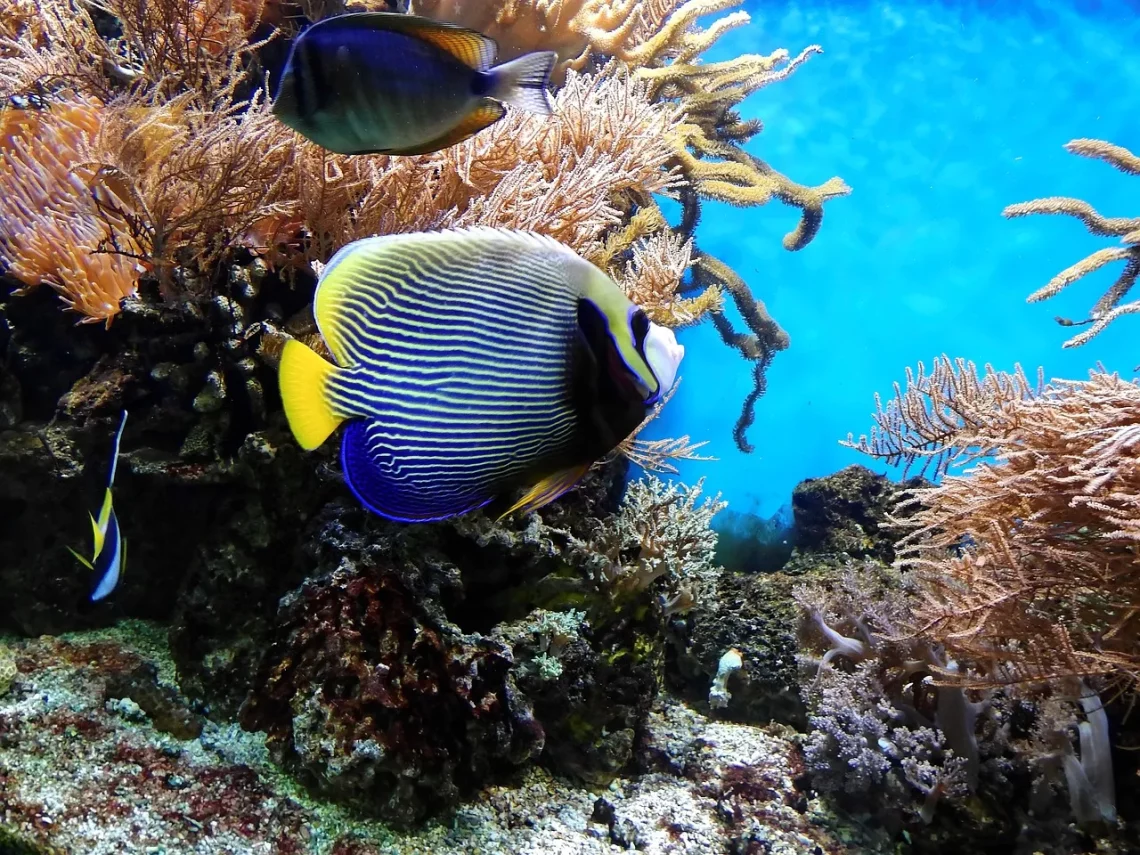
Effective Methods to Remove Nitrates from Your Aquarium Water
Maintaining a healthy aquarium environment is crucial for the well-being of your aquatic life. One of the most common challenges faced by aquarium enthusiasts is high nitrate levels in the water. Nitrates, which are a product of fish waste, uneaten food, and decaying plant matter, can accumulate over time and pose serious risks to the health of fish and plants. Elevated nitrate levels can lead to stress, reduced resistance to disease, and even death in severe cases.
Aquarists often find themselves in a constant battle against nitrates, especially in heavily stocked tanks. Understanding the sources of these compounds and implementing effective removal methods is vital to creating a thriving aquatic ecosystem. Various strategies can be employed, ranging from natural filtration to chemical treatments. By regularly monitoring nitrate levels and taking proactive measures, you can ensure a stable environment that supports the health and vitality of your aquarium inhabitants.
Whether you are a novice or an experienced aquarist, mastering the art of nitrate management is essential. In this article, we will delve into some effective methods for removing nitrates from your aquarium water, ensuring a safe and healthy habitat for your aquatic companions.
Understanding Nitrate Sources in Your Aquarium
To effectively manage nitrate levels in your aquarium, it is crucial to understand where these compounds come from. Nitrates are primarily generated from biological processes within the tank. Fish produce waste that breaks down into ammonia, which is subsequently converted into nitrites and then nitrates through the nitrogen cycle. While nitrates are less toxic than ammonia and nitrites, they can still accumulate to harmful levels if not managed properly.
Overfeeding is one of the key contributors to high nitrate levels. Uneaten food decomposes and adds to the organic waste in the aquarium, increasing nitrate concentrations. This is particularly problematic in tanks with high fish populations, where the biological load is already significant. Regular feeding habits should be monitored, and it is advisable to remove any excess food shortly after feeding.
Another source of nitrates is decaying plant matter. Live plants can help absorb nitrates, but when they die or decay, they can release these compounds back into the water. Regular maintenance, including trimming dead leaves and removing detritus, is essential to prevent this buildup.
Additionally, the type of substrate used in your aquarium can influence nitrate levels. Some substrates can harbor bacteria that contribute to the breakdown of organic matter, potentially leading to increased nitrate production. Choosing the right substrate and maintaining a clean environment will help mitigate these issues.
Overall, understanding the sources of nitrates in your aquarium is the first step toward effective management. By addressing feeding practices, plant maintenance, and substrate choices, you can significantly reduce the risk of elevated nitrate levels.
Natural Methods for Nitrate Removal
Natural methods for nitrate removal are often preferred by aquarists who seek to maintain a balanced ecosystem without relying on chemicals. One of the most effective ways to reduce nitrates is through the use of live plants. Aquatic plants absorb nitrates as part of their nutrient requirements, helping to lower levels in the water. Fast-growing species, such as hornwort and water sprite, are particularly effective at nitrate absorption.
Incorporating a well-planned aquascape with a variety of plants can create a more efficient natural filtration system. Additionally, creating a balance between fish and plant populations is vital. Too many fish in relation to plant biomass can lead to an excess of nitrates, so it’s essential to find the right equilibrium.
Another natural method involves the use of beneficial bacteria. These microorganisms play a crucial role in the nitrogen cycle, breaking down ammonia and nitrites into nitrates. By promoting a healthy population of beneficial bacteria, you can enhance the biological filtration of your aquarium. This can be achieved by adding products that contain live bacteria or by using established filter media from another healthy aquarium.
Regular water changes are another essential practice for managing nitrates naturally. While it may seem counterintuitive, replacing a portion of the aquarium water with fresh, dechlorinated water can help dilute nitrate concentrations. A good rule of thumb is to perform partial water changes of 10-20% weekly, or more frequently if nitrate levels are consistently high.
In summary, utilizing live plants, fostering beneficial bacteria, and conducting regular water changes are effective natural methods for nitrate removal. These practices not only help manage nitrate levels but also contribute to the overall health and stability of your aquarium.
Chemical Treatments for Nitrate Reduction
When natural methods are insufficient to control nitrate levels in your aquarium, chemical treatments can provide a more immediate solution. One common approach is the use of nitrate-removing media or resins. These products are designed to absorb nitrates from the water, effectively lowering concentrations.
Nitrate-removing media can be added to your filter system, allowing water to flow through the material where nitrates are captured. It’s important to follow the manufacturer’s instructions regarding the amount to use and how often to replace the media for optimal results. Some products may require activation or rinsing before use, so be sure to read the guidelines carefully.
Another option for chemical nitrate reduction is the use of denitrifying filters. These specialized filters create an anaerobic environment where beneficial bacteria can convert nitrates into nitrogen gas, which is then released harmlessly into the atmosphere. While these systems can be more complex to set up, they are highly effective for maintaining low nitrate levels in larger or heavily stocked aquariums.
Chemical treatments, while effective, should be used with caution. It’s essential to monitor your aquarium conditions closely after applying any chemicals, as sudden changes can stress fish and other aquatic inhabitants. Additionally, relying solely on chemical solutions may not address the underlying causes of high nitrate levels.
In conclusion, chemical treatments provide a viable option for nitrate reduction when natural methods are inadequate. By incorporating nitrate-removing media or denitrifying filters into your aquarium care routine, you can achieve a more stable and healthy aquatic environment.
Maintaining a Balanced Aquarium Ecosystem
Ultimately, the key to effective nitrate management lies in maintaining a balanced aquarium ecosystem. This involves not only controlling nitrate levels but also ensuring that all aspects of your aquarium function harmoniously. Regular monitoring of water parameters, including nitrates, is essential for early detection of any issues.
Investing in a good quality test kit will allow you to keep track of nitrate levels regularly. Aim to maintain nitrate levels below 20 parts per million (ppm) for most freshwater fish. If you find levels consistently higher than this, it may be time to reevaluate your feeding practices, plant health, and overall tank maintenance.
In addition to managing nitrates, consider the overall health of your fish and plants. Stress from poor water quality can make your aquatic life more susceptible to diseases. Providing a varied diet for your fish, ensuring adequate oxygen levels, and maintaining stable temperatures will contribute to a thriving aquarium.
Furthermore, consider the impact of stocking density on your nitrate levels. Overcrowding can lead to increased waste production, resulting in higher nitrates. Research the specific needs of your aquatic species and aim for a balanced population that promotes a healthy environment.
In conclusion, maintaining a balanced aquarium ecosystem is critical for effective nitrate management. By regularly monitoring water parameters, practicing responsible feeding, and ensuring the health of your fish and plants, you can create a thriving aquatic habitat that minimizes nitrate issues.
In summary, managing nitrates effectively involves understanding their sources, employing both natural and chemical removal methods, and maintaining a balanced ecosystem. By taking these steps, you can provide a safe and healthy environment for your aquatic life to flourish.




